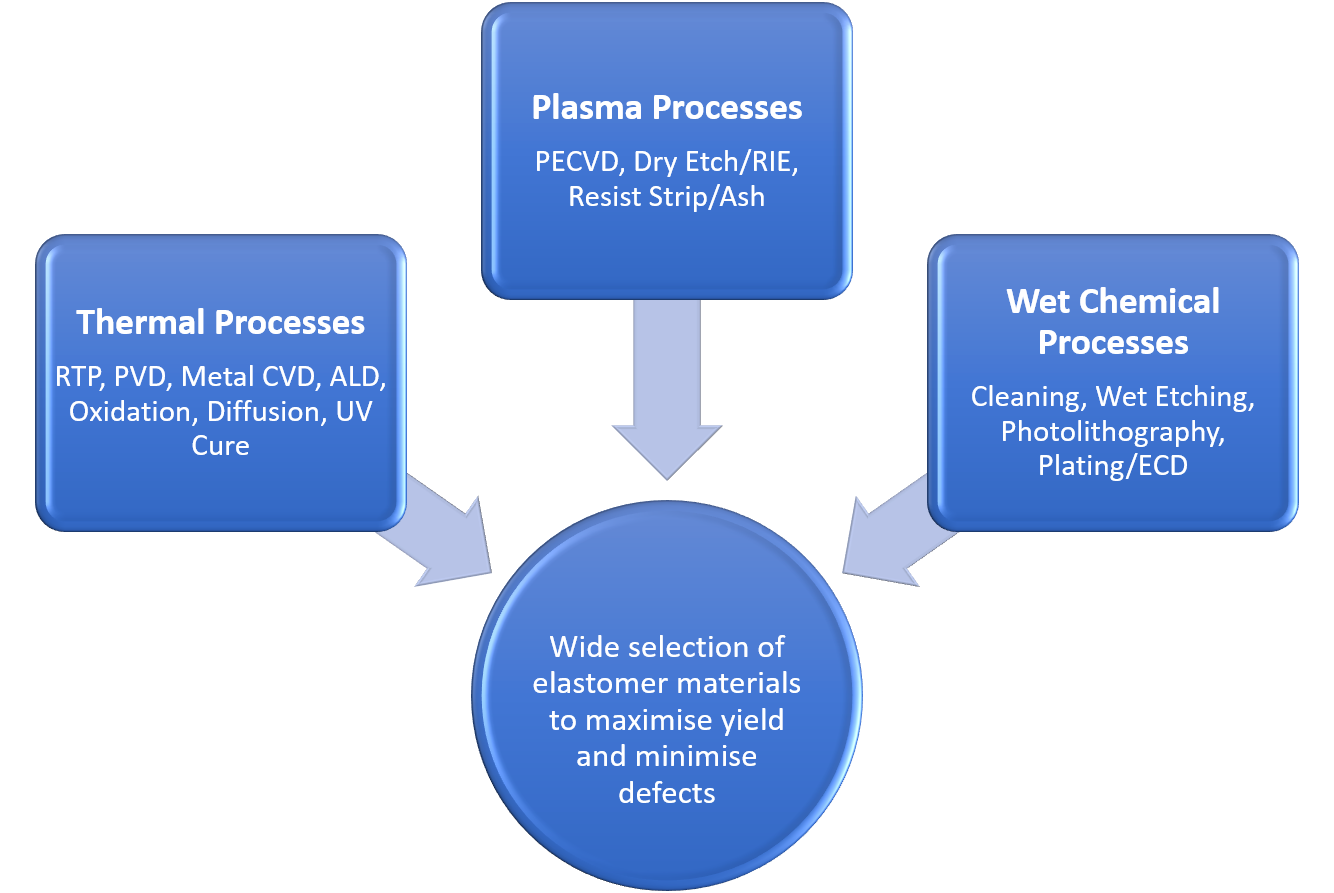Wet Chemical Process
Semiconductor Manufacturing – Wet Chemical Process
Electro or Electroless Chemical Deposition
Despite the fact that this is a smaller division of the semiconductor chip manufacturing industry, it still plays a crucial role. Wet chemical processes are used in etching, cleaning, and other stages in chip manufacturing. Wafers can be cleaned and rinsed after the first wafer preparation. In this stage, the residual particles and other contaminants are removed from the wafer surface. Afterwards, the wafer may be exposed to chemicals for adhesion promotion and photoresist deposition. Furthermore, following the photoresist being applied to the wafer surface, the wafer can be exposed to numerous photolithography stages. Following that, the wafer can then be exposed to photoresist stripping and liquid solutions. Photoresist stripping solutions generally entail organic solvents or aggressive acids.
In short, Wet Chemical Processes are still used in the processing of wafers and substrates, especially in these two main areas:
- Removal of organic, oxide, or metallic and ionic contaminants at various stages of the manufacturing process. Processes include RCA or SC1 and SC2 cleans and resist wet strip.
- The application of copper in the interconnect or 3D packaging requires electrochemical deposition or electroless chemical deposition.
Apart from high resistance to particular chemicals, it is vital that the seal materials do not contribute organic or trace metallic contamination to the cleaning or stripping fluids.
Adequate selection of recommended products will contribute to:
- Low chemical erosion rates
- Low pinholes in thin bonded elastomer material installations
- Reduced Cost of Consumables (CoC)
- Cost-optimized recommendation dependent on installation
- Minimized impact on device yield and electrical yield
- Low trace metal contamination
- Minimized copper plate up in ECD
- Low particle release rates where necessary
Wet Chemical Process Applications
The installations for seals in wet chemical processes are just like installations seen in the general chemical process industry. Even though adequate groove design is critical for seal performance, the groove design doesn’t need to account for elastomer thermal expansion. The leakage of process chemicals can lead to issues with environmental exposure. The liquid chemical must be transported in the properly sealed containers in order to prevent leakage of gases/fluids into the environment. Considering that containers may set for a rather long time prior to use, therefore the elastomers need to maintain integrity. The seals should resist the compression set and shouldn’t swell in aggressive chemical solutions.
Instrumentation Seals – examples include seals for flow meters, conductivity probes and temperature probes. Typically, O Ring seals that must maintain their integrity (without deterioration) when exposed to many aggressive solvents. Adequate seal design is crucial for these installations.
Flange Fittings – required in transportation and piping of chemicals. These elastomers must resist – without degradation or leakage – all sorts of aggressive chemicals. Degradation of the seal could lead to leaks into the environment or the release of particles or metallic ions into the process stream.
Material Requirements in the Wet Chemical Process – Perfluoroelastomers (FFKM)
Perfluoroelastomers (FFKM) provide the widest range of chemical resistance and can be used in most wet chemical process installations. They remain a top choice for these applications due to their almost universal chemical resistance and low contamination. Wet chemical processes do not involve high temperatures as in many thermal and plasma processes. Nevertheless, elastomer seals must resist aggressive chemical attacks such as amines, aggressive stripping solutions, and acids. Chemical attack frequently causes swelling of the elastomer, which in turn leads to extrusion and degradation over time.

The below table shows compatible and recommended elastomer material grades by application. Primary grades are adjusted in the direction of critical process/tool placements.
| PROCESS/APPLICATION | TEMPERATURE RANGE | PROCESS MEDIA | PRIMARY MATERIALS | COMPATIBLE MATERIALS |
| Cleaning / Etching | 25°C – 150°C (77°F – 302°F) | UPDI, Piranha, SC1, SC2, O3, HF (49%), H3PO4, HNO3 | MBMS0022 REV2, MBMS0585, MBMS0020 | MBMS0391 |
| Photolithography Resist Strip | 25°C – 125°C (77°F – 257°F) | H2SO4 + oxidant, organic acids, NMP, amines | MBMS0022 REV2, MBMS0585, MBMS0020 | MBMS0391 |
| Copper Plating ECD | 25°C – 100°C (77°F – 212°F) | CuSO4 solution H2SO4, H2O2 | MBMS0022 REV2, MBMS1119 |
If you require further information regarding our range of products and/or services, please contact a member of the team.
E & OE.